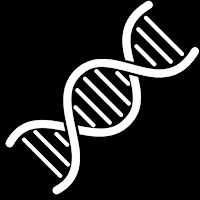Expar test Vs PCR/LAMP test
The scientists used a three way comparison study to confirm that the Exponential Amplification Reaction (EXPAR) method is just as sensitive, but faster, than both PCR and LAMP tests which are currently used in hospital settings.
Both PCR and LAMP tests detect viral RNA, which can be present in extremely low levels in swabs taken from the mouth and nose. These tests use a two-step process. It involves
- Conversion of RNA to DNA called reverse transcription.
- Amplification of the material many times over so it can be detected in the sample.
Both the reverse transcription and amplification steps slow down existing COVID assays that are based on nucleic acid detection, compared to antigen tests, such as lateral flow, which do not have these steps. However, while this makes lateral flow tests faster than those based on PCR and LAMP, in return they are typically less sensitive. An ideal test would be one that is both sufficiently sensitive and speedy our test, called RTF-EXPAR, achieves this goal.
How RTF-EXPAR works?
The assay team designed a new RNA-to-DNA conversion step that avoids reverse transcription, making it reverse transcription-free (RTF). Secondly their amplification step is modified to generate the read-out signal uses EXPAR, an alternative DNA amplification process to PCR and LAMP.
EXPAR amplifies DNA at a single temperature, thus avoiding lengthy heating and cooling steps found in PCR. However, while LAMP also uses a single temperature for amplification, EXPAR is a simpler and a more direct process, in which much smaller strands are amplified. This makes EXPAR an even faster DNA amplification technique than not only PCR but also LAMP.
COVID-19 results under 10 minutes:
The study revealed that the RTF-EXPAR method converts under 10 strands of RNA into billions of copies of DNA in under 10 minutes, using a one-pot assay that is compatible with more basic, benchtop equipment than that used with current testing methods.
RTF-EXPAR also demonstrated significant improvements over both PCR and LAMP-based assays on time to signal detection.
At low concentrations of RNA (7.25 copies/µL), the time to generate results was,
- For PCR: 42 minutes
- For LAMP: 11 minutes
- For EXPAR: 8 minutes
At high (1450 copies/µL) concentrations of viral RNA, the time to generate results was,
- For PCR: 34 minutes
- For LAMP: 11 minutes
- For EXPAR: 3 minutes
Identification of the optimal sequence was clearly an important step in the development of the EXPAR method, and the sequence detected in the study, which comes from the Orf1ab gene in the SARS-CoV-2 genome, has been shown to be conserved in all current variants of COVID1. However, the RTF-EXPAR method can be quickly adapted should new variants emerge, or for testing other viral pathogens such as Influenza, Respiratory Syncytial Virus (RSV), or Ebola, where near-patient testing is required to prevent more widespread transmission.
The assay has been tested at the Surgical Research Laboratory at the University of Birmingham. Professor Andrew Beggs, whose team conducted the testing, commented: “The testing used swabs containing a typical range of viral loads seen during the pandemic, and had a six-minute cut-off time. The analysis showed RTF-EXPAR’s sensitivity is equivalent to quantitative PCR testing, with a positive predictive value of 89%, and a negative predictive value of 93%. We expect to publish the full results of this testing in the near future.”
The team is now seeking commercial partners for rapid licensing, to make the RTF-EXPAR test as available as widely as possible. It can be deployed at entertainment venues, airport arrival terminals, and in remote settings to increase the COVID-19 testing. It can also be very useful where clinical testing laboratories are not available.
References:
- Ultra-rapid Detection of SARS-CoV-2 RNA using a Reverse Transcription-Free Exponential Amplification Reaction, RTF-EXPAR, published in the Proceedings of the National Academy of Sciences.




